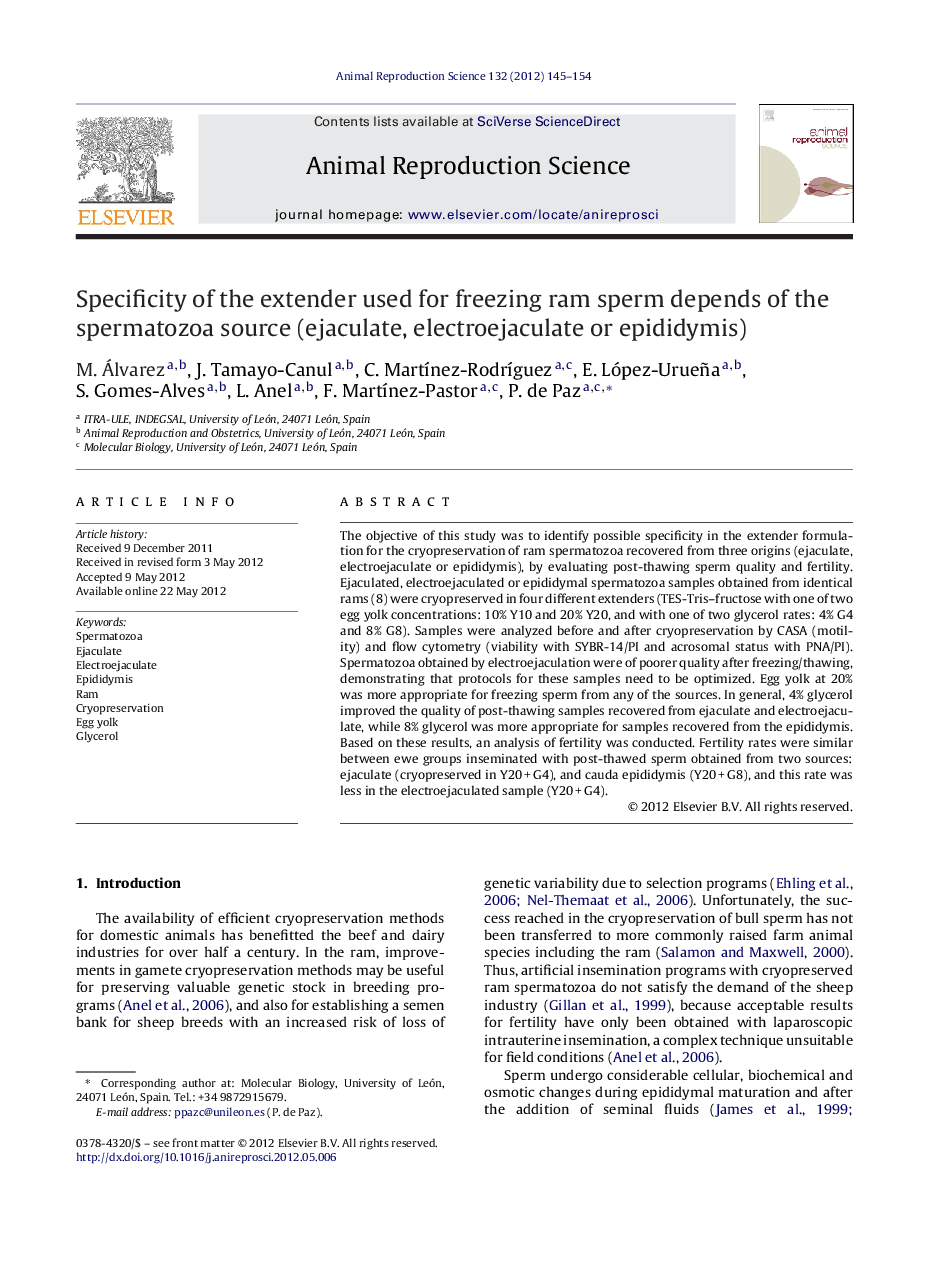| Article ID | Journal | Published Year | Pages | File Type |
|---|---|---|---|---|
| 2073593 | Animal Reproduction Science | 2012 | 10 Pages |
The objective of this study was to identify possible specificity in the extender formulation for the cryopreservation of ram spermatozoa recovered from three origins (ejaculate, electroejaculate or epididymis), by evaluating post-thawing sperm quality and fertility. Ejaculated, electroejaculated or epididymal spermatozoa samples obtained from identical rams (8) were cryopreserved in four different extenders (TES-Tris–fructose with one of two egg yolk concentrations: 10% Y10 and 20% Y20, and with one of two glycerol rates: 4% G4 and 8% G8). Samples were analyzed before and after cryopreservation by CASA (motility) and flow cytometry (viability with SYBR-14/PI and acrosomal status with PNA/PI). Spermatozoa obtained by electroejaculation were of poorer quality after freezing/thawing, demonstrating that protocols for these samples need to be optimized. Egg yolk at 20% was more appropriate for freezing sperm from any of the sources. In general, 4% glycerol improved the quality of post-thawing samples recovered from ejaculate and electroejaculate, while 8% glycerol was more appropriate for samples recovered from the epididymis. Based on these results, an analysis of fertility was conducted. Fertility rates were similar between ewe groups inseminated with post-thawed sperm obtained from two sources: ejaculate (cryopreserved in Y20 + G4), and cauda epididymis (Y20 + G8), and this rate was less in the electroejaculated sample (Y20 + G4).
